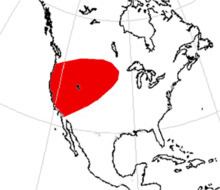Phylum Chordata Order Carnivores | Rank Genus | |
 | ||
Similar Otarocyon, Cynarctoides, Cormocyon, Enhydrocyon, Carpocyon | ||
Archaeocyon ("beginning dog") is a small extinct genus of the Borophaginae within the family Canidae (terrestrial canine) which inhabited most of North America during the Whitneyan stage through Geringian stage of the Oligocene epoch 33.3—26.3 Ma Archaeocyon existed for approximately 7.3 million years.
Contents
Species of Archaeocyon are among the earliest known borophagines, although a species of Otarocyon has a slightly earlier first appearance.
Taxonomy
Archaeocyon was a comparatively small and unspecialized dog. Its dentition (teeth) suggests a slightly more hypocarnivorous (omnivorous) diet than the otherwise similar Hesperocyon. The skeleton is also generalized, lacking specializations for running and retaining a plantigrade foot posture.
A few derived features of the dentition support a relationship to Borophaginae and Caninae (the subfamily that includes living canids), rather than to the basal canid subfamily Hesperocyoninae. The temporal position of Archaeocyon suggests an affinity to borophagines because the first members of Caninae appear substantially earlier.
Morphology
Fossil specimens of two individuals' body mass were examined by Legendre and Roth. The first specimen was estimated to weigh 1.43 kg (3.15 lbs). The second specimen was estimated to weigh 1.49 kg (3.28 lbs).
Species
Three species of Archaeocyon have been described. The two earlier species, A. pavidus and A. leptodus, differ primarily in size, with A. leptodus being larger. The third species, A. falkenbachi, is the size of A. leptodus and differs from other Archaeocyon species in having a shorter, broader skull.
Fossil distribution
Sister genera
Otarocyon, Oxetocyon, and Rhizocyon
